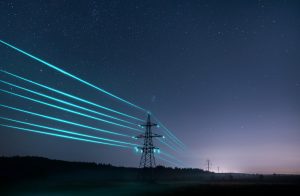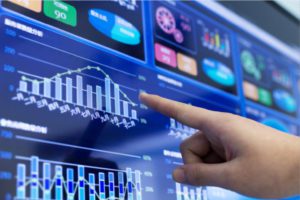Personal computers were introduced in the 1980s. That is when the industrial automation peaked. Industrial automation is when you use automated control like Programmable Logic Controller (PLC), Computer Numerical Control (CNC), Remote Terminal Unit (RTU) etc. They help in controlling industrial processes and machinery, replacing manual intervention and dangerous assembly operations, which are automated.
Let us talk about functional elements of Industrial Automation
Industrial Automation consists of an array of elements, which are well synchronised with each other. It performs functions such as controlling, sensing, supervision and monitoring of industrial processes.
Functionally, industrial automation includes field-level (Sensors & Actuators), Control level, Supervisory, production control level (SCADA) and Information & enterprise level (MES & ERP)
Field level
At the bottom level, you will find sensors and actuators that are installed in the field. Sensors are used to collect physical process signals, which helps them measure pressure, flow, temperature, etc. It then converts them into pneumatic and electrical. For instance, LDR, thermocouple, strain gauge etc.
You can use these sensors that are used for processing, then analyse it, which will help in decision making, leading to produce the control output. Control systems such as Programmable Logic controllers (PLCs), RTUs are connected to the sensors that will help you produce the targeted output by providing the signals in accordance with your program and set values.
Control Level
This level consists of control elements, microprocessor-based electronic or just simply use industrial computers that will accept the signals from different sensors as well as command signals that come from human operators. These controllers can be of two types; one is analogue and the other, digital systems. All these can differ based on the structure of control nature. The signals from the sensors are processed by a controller, which produces the control output to different devices, which also depends on the same.
The next is PLC (Programmable logic controller) —which is a special form of microprocessor-based controller that uses programmable memory to help store instructions and execute like logical, sequencing, timing, counting and arithmetic—to control machines and their processes. It contains CPU, digital I/O, analogue I/O and communication modules, which can smoothly operate in an industrial environment—conditioned to control different process parameters using the program, written in accordance with the industrial processes.
Supervisory control and production control level
The last level of control is the SCADA systems, which controls the smaller subsystems. It consists of two things: HMI (Human-Machine Interface) and process computers. With the help of these personal computers, you can perform elevated level control operations such as set point computations, performance monitoring, diagnostics, start-up, shut down and other emergency operations. Most of their systems contain Distribution Control System (DCS) or Supervisory Control and Data Acquisition (SCADA) and HMI software at this specific level.
In conclusion, these were some of the steps that PLC, SCADA and HMI perform at industrial automation, and here Industrial Internet of things plays a crucial role as well. If you require the same for your business/plant as well, then you can trust #SchneiderElectric, it will change how you work. #LifeIsOn.




Conversation
I appreciate you for your information and I like to read it.